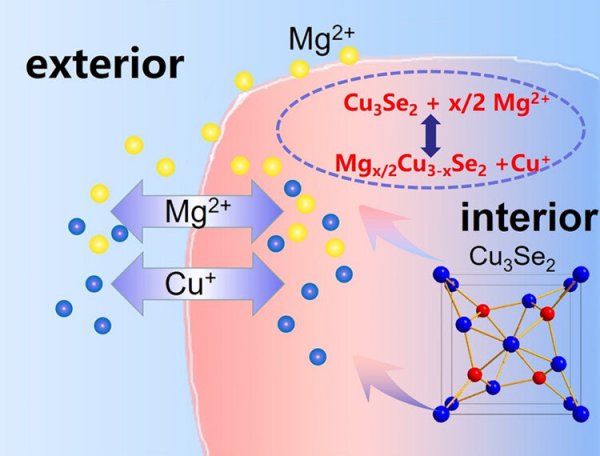Chinese scientists use copper ion high-energy magnesium batteries to charge and discharge 200 times
According to foreign media reports, researchers at the Qingdao Institute of Bioenergy and Processes (QIBEBT) of the Chinese Academy of Sciences are one step closer to creating a viable high-energy output magnesium battery. This research can replace lithium in electric vehicle batteries with magnesium, and magnesium ion is a copper-rich charge carrier and a highly conductive material that allows current to flow freely and output high energy.

(Source: QIBEBT)
According to a report from the United States Geological Survey, the reserves of magnesium on the earth are much higher than those of lithium. Magnesium batteries can reduce costs due to their abundant magnesium reserves. The price of magnesium is about US$5,000 per ton, which is about half that of lithium. In addition, even at room temperature, compared with lithium batteries, magnesium batteries can provide higher energy and power density. Finally, because magnesium is not a material that easily forms dendrites and causes the internal structure of the battery to fail, it is also safer and can avoid the risk of battery explosion and fire.
However, the use of magnesium in cathodes and electrolytes has been an obstacle to the development of magnesium batteries. Magnesium reacts with the electrolyte to form chloride, and chloride will cause the battery performance to become low, unable to store and release a large amount of energy, and is not commercially competitive. As a result, Chinese scientists have created an economically feasible high-performance magnesium battery that uses copper ions as a charge carrier.
During the charging process, the diffusion of high-density magnesium ions in the electrolyte will slow down. In addition, the chemical bond between magnesium ions and anions is difficult to break, resulting in a particularly poor charge-discharge cycle. To solve this problem, the researchers used another charge carrier in the cathode: copper, which can be dissolved in the electrolyte, so that the electrolyte is composed of magnesium, copper ions, and boron anions (BCM).
When the magnesium battery is discharged, copper ions will dissolve in the electrolyte and form a metallic copper coating on the electrode. Copper has high conductivity, so current can flow freely, thereby generating high energy.
In the laboratory, the magnesium/copper battery maintained 80% of its original capacity after 200 charge-discharge cycles, showing good performance. After comparison, commercial lithium-ion batteries lose more than 20% of their original capacity after 1,000 charge-discharge cycles. Although magnesium/copper batteries are currently not commercially viable, they have opened the way for the development of batteries that can compete with lithium batteries. Professor CUI Guanglei, the research leader, said: "In the next two years, we hope to allow the battery to reach 1,000 milestones in charge and discharge cycles. Next, we will design a flexible battery pack, so we first need to create a gel copper ion electrolyte Solution." (Yu Qiuyun)
Hard-plate has many years experience to fabricate the nearly full set of vertical mill internal wear parts. The fabrications are mainly made from chromium carbide hardfacing plates, which has abrasion resistant property and could make the service life last longer than carbon steel.
Bimetal welding wear resistant alloy steel plate, its substrate using common Q235B steel plate, and Wear-resisting layer is composed of advanced alloy welding which was joint research and development by our company and scientific research institutions.
1, The chrome plate is a kind of the spray welding technology to produce the high wear resistance, resistance to erosion of composite materials
2, The wear-resisting layer with high hardness has good wear-resistant performance, and the substrate have most widely using because of its moderate carbon, good comprehensive performance , strength and welding
3, This plate can be easily formed to suit curves and contours. Welded studs or countersunk inserts can be fitted so the plates can easily replaceable.
4, The chromium carbide allow this wear plate to be supported under extreme wear and strong impact including of truck deck liners, hoppers, shutes
5, The substrate is not fixed, the plate can be chose according to customers needing. Different thickness is allowed according to your demand.
Cement Industry Feeder Cone,Chromium Carbide Ring Liner,Chromium Carbide Scraper Plate,Wear Sealing Ring Liner
SHENYANG HARD WELDING SURFACE ENGINEERING CO.,LTD , https://www.hardfacingplate.com